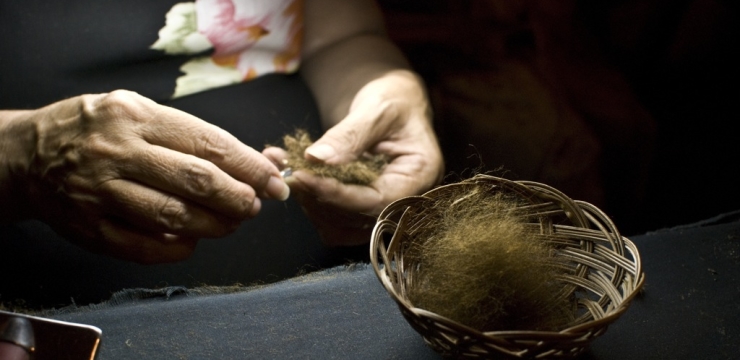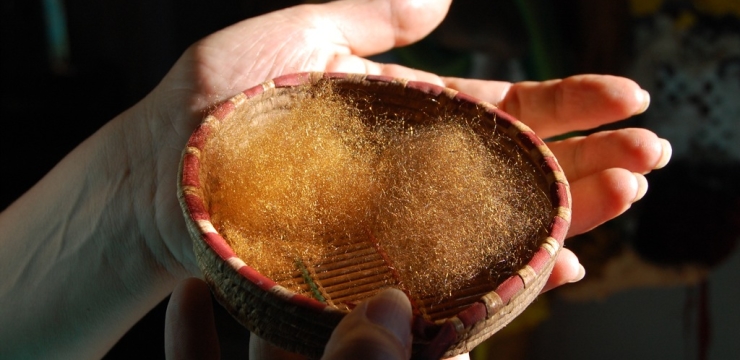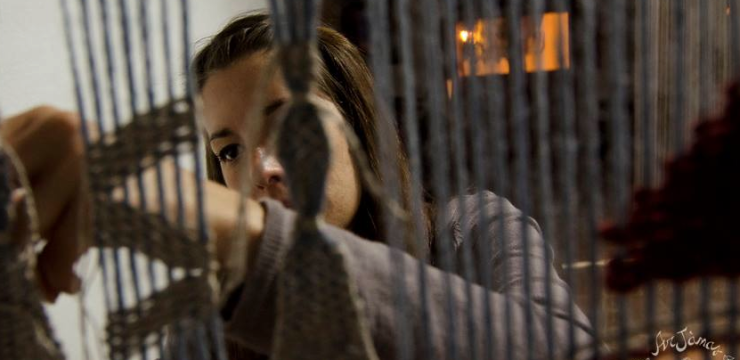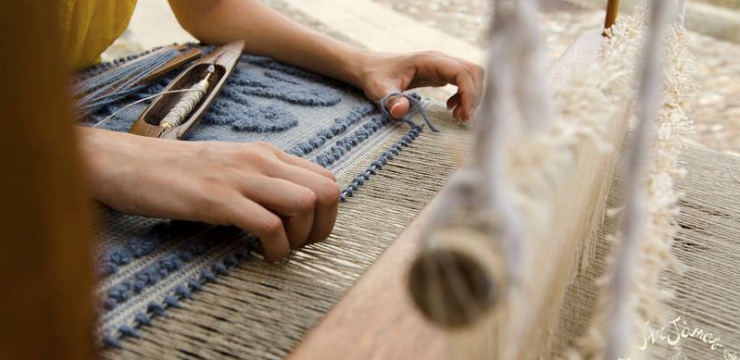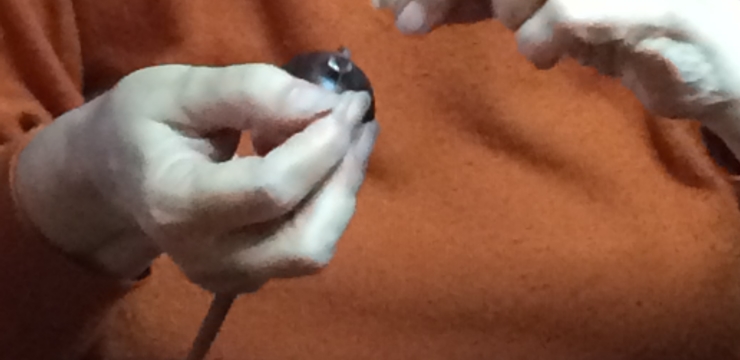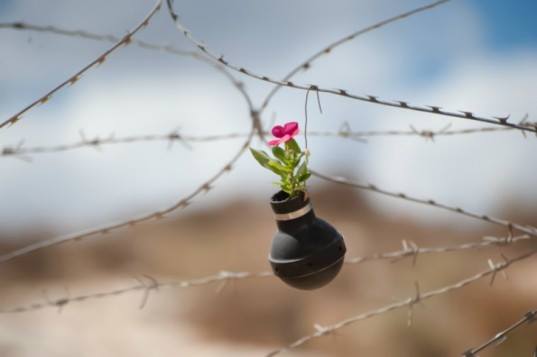There are certain things that only very obstinate women can do. Saving the world, for one!
Saving it from banality, cheap commerce, vulgarity and standardization. There are women, many women, who are very obstinate and very capable. And even in the silence around them, they manage to work for humanity and make it better.
Think of the Palestinian woman who grew flowers in hand grenades, making a symbolic contribution, a redemption, an obstinate mark of goodness, beyond a symbol of hope for peace.
There are women in Sardinia who are dedicated to saving something priceless that would be lost without them. They do it for the spirit that infuses the world, seeking its essence, its beauty, and because sometimes it needs to be saved.
Chiara Vigo is the last master of “bisso,” sea silk, in the world. She has dedicated her life to fulfilling a promise made to the sea and to her grandmother to preserve and protect sea silk and the secret of its crafting to let other women and the whole world keep on enjoying its magical beauty.
Sea silk is made from Pinna Nobilis, the “noble pen shell,” the largest bivalve mollusk in the Mediterranean. Its filament is collected by diving, keeping the mollusk alive and protected. The mollusks lives in the shallows between Calasetta and Sant’Antioco, waters that Chiara knows well, having studied their ecosystem thoroughly.

The dark amber color of the silk mollusk changes when exposed to sun rays, turning it gold, making a golden silk that is unbelievably light and brilliant.
In the time of Chiara’s grandmother, fishermen harvested the mollusks and the filament collected was long enough to make fabrics made completely of sea silk in its weft and
weave. After the fiber was dried and carded, it was desalinated and then twisted by hand. Now the mollusk is preserved and the filament collected is much shorter so it can only be used for embroidery with a technique called “unghiata” (with nails), or for very small textiles.
Pictured: Washed and carded sea silk

The tradition of weaving sea silk is age-old. Legend has it that Nefertari’s bracelet cuff was made of it, as well as the embroidery on Byzantine empress Theodora’s dress and on Queen Margaret’s wedding gown. Pieces made with sea silk are priceless, given the skill needed (know-how as we call it these days) and the rarity of the raw material as well as the time it takes. Chiara Vigo‘s mission is to vouchsafe it for those who come after her, i.e. all of us.
Likewise armed with patience and skill, Arianna (ArJànas) lives in the historic village of Tratalias (an enchanting place about which we’ll write a post of its own). Here she quite literally cultivates a passion for linen and the age-old craft of spinning, weaving and naturally dyeing fibers.
The young Arianna is devoted to this art. From the small seed grown to the harvest of the plant holding this soft, strong fiber in its stalks, she creates textiles, wool embroidered rugs, and even shoes, necklaces and other jewelry — all one-of-a-kind. Arianna applies a gentle, almost humble passion to her work; under a thin veil of shyness is a powerful, determined character, one worthy of her Greek namesake, Ariadne.
It takes a lot of character in this world and age in which our values seem lost under layers and layers of useless things with fleeting worth and that say nothing. There is a feeling of great relief —a sense of redemption, even — in knowing that there is someone in an old workshop, in a ghost town, on a magical island, sowing and harvesting something that, after at least a year, becomes a fine piece of jewelry or textile, never touching anything other than her hands, wood, canes and wool dyed with natural colors.


